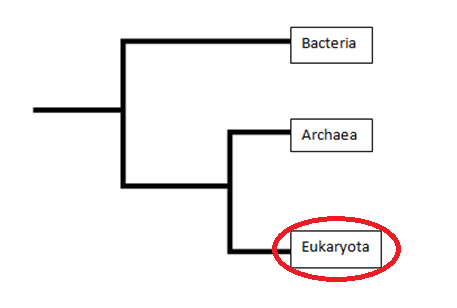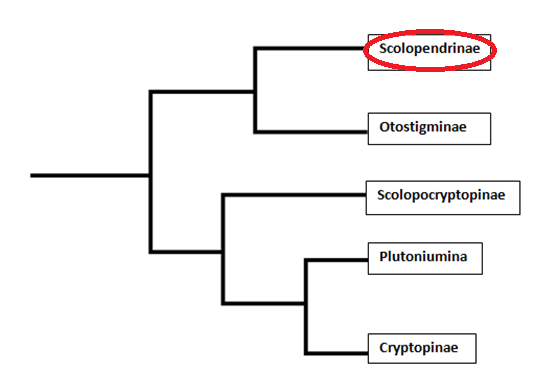Megarian Banded Centipede
(Scolopendra cingulata)
Classification
One would hope that there are only a handful of different
species of these creepy crawlers, but in fact there are
over 700 species in the Scolopendra genus alone (Simaiakis et
al. 1829). This page will show you where the Scolopendra
cingulata falls within the phylogenetic tree of life.
Domain: Eukarya
Of the three major domains of life, the Scolopendra cingulata is a Eukaryote which means it membrane bound organelles as well as the presence of a nucleus (Animal Diversity Web, 2014).
Kingdom: Animalia
Organisms under this kingdom are multicellular, heterotrophic and obtain nutrients by ingestion. These organisms at some point in their life have the power to move at their own will (Animal Diversity Web, 2014).
Phylum: Arthropoda
Animals of this nature have a hard exoskeleton to provide them with protection, segmented bodies giving them a larger range of motion and better turning ablility, and jointed appendages to help with movement as well (Animal Diversity Web, 2014).
Class: Chilopoda
This is where all species of centipedes fall under. These organisms have elongated, multi-segmented bodies with many different sets of legs. Most centipedes are under 20 centimeters in length excluding some species that inhabit tropic regions (Dioguardi, 2005).
Order: Scolopendromorpha
This order contains all the larger species of centipedes. These cenitpedes grow to around 20 centimeters with some reaching lengths even greater than that (Animal Diversity Web, 2014).
Family: Scolopendridae
This family includes the larger centipedes that have venom used as defense and as a means of killing their prey (Animal Diversity Web, 2014).
Species: Scolopendra cingulata
The Megarian banded centipede live in and around the Mediterranean sea. They have alternating black and yellow bands on their segmented bodies and usually reach lengths of about 15 centimeters. They use venom to take down and kill their prey and deter preditors from choosing them as their next meal (Animal Diversity Web, 2014).
This is a image of a phylogenetic tree of the 3 major domains of life. The red circle shows where the S. cingulata is among the three domains.
This image is of the Order Scolopendromorpha showing all the families within. The red circle shows that the S. cingulata is in the Scolopendrinae family.
Andre McMillion and Jaelen Yach of the University of Wisconsin - La Crosse. Bio 203 - Spring 2014

